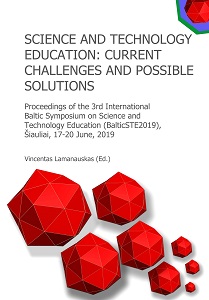MAGNET AND ITS APPLICATION. PHYSICS EDUCATION IN KINDERGARTEN
MAGNET AND ITS APPLICATION. PHYSICS EDUCATION IN KINDERGARTEN
Author(s): Anna Klim-Klimaszewska
Subject(s): Social Sciences, Education, Preschool education
Published by: Scientia Socialis, UAB
Keywords: natural curiosity; physics education; preschool education; 6-year-old child
Summary/Abstract: It is generally accepted that education in the field of physics is possible only when one has received sufficient grounds for it. But physics is an attempt to understand the world around us. Everything one needs to study physics is an open mind and willingness to learn. It is also commonly thought that preschool-age children have a natural curiosity to figure out how the world functions. They focus not only on people but also on objects which they touch, taste, smell, throw into water, etc. Therefore, physics may be introduced as early as in kindergarten. Experiments in physics conducted together with a preschool group activate all analyzers, facilitate a more complete understanding of curricular contents, allow children to discover answers independently and to formulate conclusions. The research presents theoretical considerations regarding the nature of the class of physics conducted with preschool-age children and examples of practical solutions corresponding to physics-related activities performed in a group of 6-year-olds in the Self-Government Kindergarten at the School Complex in Łomazy.
- Page Range: 91-94
- Page Count: 4
- Publication Year: 2019
- Language: English
- Content File-PDF

